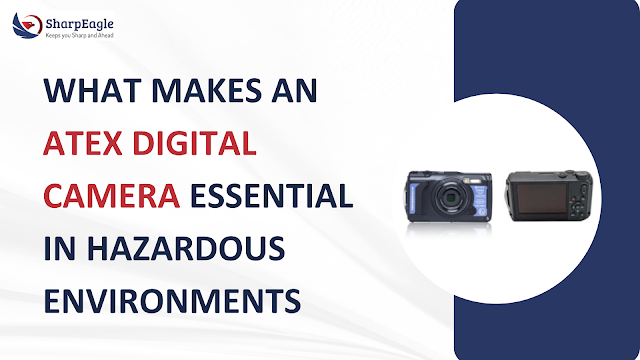How Explosion Proof Lighting Is Designed to Prevent Accidents
In high-risk industrial environments such as oil refineries, chemical plants, mining operations, and grain processing facilities, the presence of flammable gases, vapors, and dust particles creates a constant threat of explosion. One minor spark or excess heat from equipment can ignite these volatile atmospheres and lead to devastating accidents. That’s why explosion proof lighting has become an essential safety feature in hazardous locations.
More than just tough-looking fixtures, explosion proof lights are strategically engineered to prevent accidents by eliminating ignition sources and containing internal faults. Let’s explore how these lights are designed to function safely in the world’s most dangerous work environments.
What is Explosion Proof Lighting?
Explosion proof lighting solutions refer to electrical lighting fixtures designed to operate safely in explosive atmospheres without igniting the surrounding flammable materials. Contrary to popular belief, “explosion proof” doesn’t mean the light can survive a blast. Instead, it means the fixture is built in a way that any internal sparks or explosions are contained within the housing, preventing them from igniting the hazardous environment outside.
These lights are typically certified for use in specific hazard zones under regulations such as ATEX (Europe) or NEC/UL844 (USA) and are labeled based on the classification of explosive risk.
How Explosion Proof Lighting Prevents Accidents
1. Flameproof Enclosures
The most critical design feature of explosion proof lighting is its flameproof (or explosion-containment) enclosure. If a spark or short circuit occurs inside the light due to a component failure, the enclosure contains the explosion. The joints of the fixture — often threaded or flanged — are built to withstand internal pressure and allow hot gases to cool before they exit the housing, thus preventing ignition of the surrounding atmosphere.
2. Controlled Surface Temperature
Explosion proof lights are designed to maintain a safe surface temperature that’s well below the ignition temperature of flammable gases or dust present in the environment. Even under full operation or fault conditions, the housing dissipates heat efficiently to avoid becoming an ignition source.
3. Corrosion and Impact Resistance
In harsh industrial settings, equipment often faces mechanical impacts, exposure to corrosive chemicals, saltwater, or abrasive dust. Explosion proof lighting is made with rugged materials like marine-grade aluminum or stainless steel and has IP66/IP67 ratings to resist corrosion and water ingress. This ensures the structural integrity of the enclosure over time, eliminating potential weak spots.
4. Ingress Protection (IP) Ratings
These lights are sealed to prevent the entry of dust and gases, which could otherwise enter the housing and interact with internal electrical components. High IP ratings (such as IP66 or IP67) ensure protection against water jets, dust, and even temporary submersion in some cases.
5. Advanced LED Technology
Most modern explosion proof lighting solutions now use LED technology, which generates much less heat compared to traditional incandescent or halogen lights. This drastically reduces the risk of surface temperature-related ignition and improves energy efficiency. LEDs also have longer lifespans and lower maintenance needs, reducing the frequency of exposure to hazardous zones for repair or replacement.
Certification Standards and Compliance
To ensure safety, explosion proof lights must meet strict international safety standards and testing protocols, including:
- ATEX Directive (Europe): Ensures products are safe for explosive atmospheres within EU countries.
- IECEx Certification (Global): International certification for electrical equipment used in explosive atmospheres.
- UL 844 and NEC Class/Division System (USA): Defines standards for hazardous locations in North America
- INMETRO, PESO, and other regional certifications as applicable.
Each light is marked with a classification indicating which hazardous zone or class/division it is approved for. This helps engineers choose the right fixture for the specific risk level of their worksite.
Real-World Applications of Explosion Proof Lighting
Explosion proof lighting is used across various industries where volatile substances are present:
- Oil & Gas: Refineries, offshore platforms, and pipelines
- Chemical Plants: Storage and production areas
- Mining: Tunnels and storage areas with combustible dust
- Grain Handling: Mills and silos with fine organic dust
- Pharmaceuticals: Areas with solvent handling and mixing
- Paint Shops and Spraying Booths
In each of these environments, a lighting failure can mean more than just darkness — it can trigger catastrophic events. Explosion proof lighting serves as a critical line of defense, maintaining both visibility and safety.
Benefits Beyond Safety
In addition to accident prevention, explosion proof lighting offers:
- Reduced Downtime: Less maintenance means fewer interruptions.
- Operational Efficiency: Brighter, targeted lighting improves visibility and productivity.
- Long-Term Cost Savings: Durable fixtures and LED technology reduce replacement and energy costs.
- Compliance: Helps companies meet OSHA, NEC, and other safety regulations, avoiding fines and liability.
Conclusion
Explosion proof lighting is not just another industrial product, it’s a purpose-built safety solution. Every aspect of its design, from the housing material to the thermal management system, plays a role in preventing accidents and protecting lives in explosive atmospheres.
Whether you’re managing a refinery, offshore rig, or chemical warehouse, ensuring your lighting system is explosion proof and properly certified isn’t just a compliance step; it’s an essential investment in workplace safety.
If your business operates in explosive atmospheres, don’t take chances with safety. Choose SharpEagle’s explosion proof lighting — built to protect, engineered to last.




Comments
Post a Comment